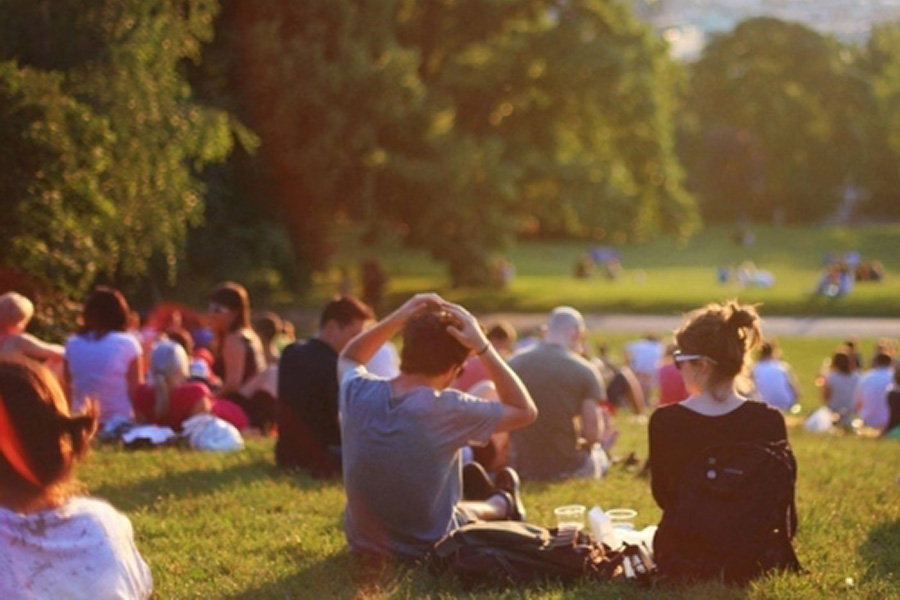5 Ways Trees Improve Your Health

The benefits trees provide are simply too numerous to catalog. In addition to providing humans with a number of basic needs—including relatively important things like oxygen and food—trees improve property values, reduce crime rates, and absorb excess runoff water.
However, the most important benefits trees provide are those that help people live longer, healthier lives.
Trees Remove Pollutants From the Air
A Tree Platform Allows Nature to be Enjoyed From Above
Trees play a crucial role in maintaining air quality. Through their natural respiratory activities, trees remove carbon dioxide and release oxygen, essential for our survival. Moreover, trees trap particulate matter from the air, thanks to their extensive leaf surface area. This particulate matter, which includes dust, pollen, and smoke, adheres to the leaves, bark, and branches of trees, reducing the amount of pollutants we inhale. In urban areas, where air pollution is often higher, the presence of trees can significantly improve air quality, making cities healthier places to live.
The effectiveness of trees in filtering air pollutants has been well documented. For example, a single mature tree can absorb up to forty-eight pounds of carbon dioxide annually, and one acre of forest can absorb twice the CO2 produced by the average car's annual mileage. Beyond carbon dioxide, trees also absorb other harmful gases like sulfur dioxide, ammonia, and nitrogen oxides, further purifying the air. This makes tree planting and preservation a vital component of urban planning and public health strategies.
Trees Lower Stress
People Gather in a Tree-Lined Park
Exposure to nature, particularly trees, has been shown to reduce stress levels significantly. Visual and physical access to green spaces can lower blood pressure, decrease heart rate, and reduce levels of the stress hormone cortisol. Studies have demonstrated that individuals who spend time in environments rich with trees report feeling more relaxed and less anxious. This phenomenon is often referred to as "biophilia," the inherent human affinity for nature and living organisms.
Incorporating trees into urban environments can create calming oases amidst the hustle and bustle of city life. Parks, tree-lined streets, and green rooftops not only provide aesthetic beauty but also offer residents a respite from the stresses of daily life. Regular interactions with these green spaces can enhance mental well-being, improve mood, and even boost cognitive function, contributing to overall mental health. In fact, exposure to trees has been shown to be helpful for reducing the symptoms associated with ADHD.
Trees Shorten Healing Times for the Sick and Injured
A Woman Jogs Through a Grove of Trees
The presence of trees and natural scenery can accelerate the healing process for patients recovering from surgery or illness. A landmark study by Roger S. Ulrich examined the difference in recovery times for two different groups of patients who had undergone gallbladder surgery. Ulrich placed one group of patients in rooms overlooking trees, while the patients in the other group were placed in rooms facing a nondescript wall. Ulrich found that the patients who could see the trees healed more quickly, and they also required fewer pain medications while recovering. The therapeutic benefits of nature are attributed to its ability to reduce stress, promote relaxation, and provide a distraction from pain and discomfort.
Healthcare facilities around the world are beginning to integrate green spaces into their designs. Healing gardens, green roofs, and landscaped courtyards are becoming common features in hospitals, aiming to enhance patient recovery and well-being. These natural environments not only benefit patients but also provide a restorative setting for healthcare workers, improving job satisfaction and reducing burnout.
Trees Encourage Walking and Play
A Family Playing in an Urban Green Space
Trees make outdoor environments more inviting and enjoyable, encouraging physical activity and play. Shaded walkways, vibrant foliage, and the presence of wildlife make walking routes more attractive, prompting people to spend more time outdoors. Regular physical activity is essential for maintaining health, and green spaces with trees provide the perfect setting for exercise, play, and social interaction.
Children in particular benefit from access to tree-rich environments. Playgrounds with trees offer more imaginative and varied play opportunities, fostering physical, cognitive, and social development. Adults, too, find motivation to walk or jog in scenic areas, enhancing their fitness and overall health. Communities with ample tree coverage often report higher levels of physical activity, contributing to lower obesity rates and better cardiovascular health. Because trees improve the air quality, your body will thank you for playing in areas with plentiful trees. All of these things help encourage adults and children alike to go outside and move around, which is crucial for remaining healthy.
Trees Keep You Warmer in the Winter and Cooler in the Summer
Trees Can Provide Barriers Against Chilly Autumn Winds
Trees play a significant role in regulating temperatures, providing natural heating and cooling benefits. In the summer, trees offer shade from the sweltering summer sun and release water vapor through a process called transpiration, which cools the air. This can reduce the need for air conditioning, lowering energy bills and decreasing the urban heat island effect, where city temperatures are significantly higher than surrounding rural areas.
During the winter, trees act as windbreaks, reducing wind speed and retaining heat around buildings. This natural insulation can lower heating costs and make outdoor areas more comfortable. Strategically planting trees around homes and buildings can create a microclimate that enhances comfort year-round. By mitigating extreme temperatures, trees contribute to energy efficiency and help combat climate change by reducing the demand for fossil fuels.
Conclusion
As you can see, the health benefits trees provide are quite significant. Incorporating more trees into urban planning and personal landscapes not only beautifies the environment but also significantly enhances public health. From improving air quality and reducing stress to promoting physical activity and regulating temperatures, trees are indispensable allies in our quest for a healthier, more sustainable future. Contact Arborist Now to learn how you can contribute to a greener, healthier San Francisco Bay Area.
Originally published on May 19, 2016.










